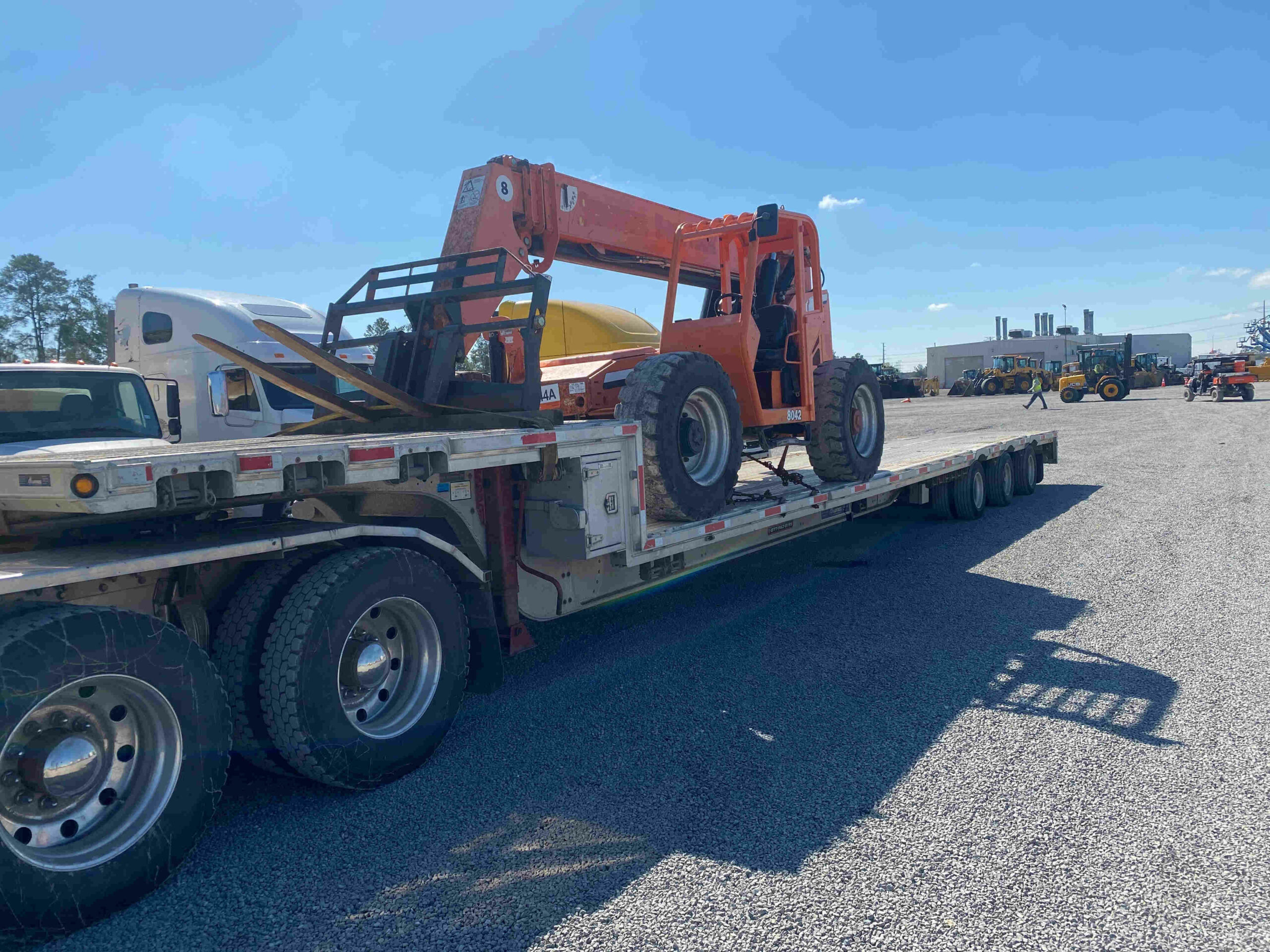11 Common Mistakes Customers Make in Large-Load Trucking
It doesn’t take much for a heavy shipping load to become frustrating and complex when you fail to avoid common mistakes. Transporting heavy and oversized loads requires careful planning and organization, and without it, things can go wrong, shipments can be delivered late, and you can lose both time and money,
Most mistakes come down to improper planning. Being organized and ready to plan your shipment ahead of time is the best attitude to have when you’re considering having heavy equipment transported. Doing your research and communicating with your driver will also help significantly. To keep heavy equipment shipping as simple and low-stress as possible, in this article, we will discuss the 11 most common mistakes customers make and how to prevent them.
1. Inaccurate Dimensions
Providing your heavy hauler and your driver with inaccurate dimensions can throw things off the rails quite quickly. Not much can happen without dimensions, and many important details of the load are determined based on dimensions, so if the dimensions are wrong, lots of other information probably is too. For example, all the permits required for loads are based on size. Without knowing the height, width, length, and weight of the load, your risk getting a permit for the wrong measurements.
The right dimensions will also determine whether the load is oversized, which trailer needs to be used, and what routes need to be taken. This can end up costing extra time and money as things are delayed and need to be reworked. With the wrong numbers or inaccurate ones, at best, you’ll need to reapply for a permit once you weigh in on the scale on your route. At worst, you could seriously damage your equipment, the truck and the trailer or cause safety hazards on public roadways.
Oversized loads often require pilot cars to escort them on the journey. Not including the accurate measurements could delay a shipment because it needs to wait for pilot car arrangements.
When setting up your load, don’t guess at the dimensions. If you’re uncertain of the dimensions of your heavy equipment, we have a powerful Specs Tool with over 60,000 pieces of machinery pre-loaded. Simply search for your model and the corresponding measurements will appear. You will need to adjust the dimensions provided if your model has extra features or is moving with attachments. We always advise starting with the right dimensions to get the most accurate price and easiest shipping process.
2. Failing to Plan Ahead
Proper planning is essential to smooth heavy haul transportation. At its quickest, a shipment can be completed within a week without complications depending on the route, driver availability, and driver responsiveness. But if customers fail to plan properly or are unable to be flexible in their schedules, it can become difficult to arrange loading days and get the shipment on the road in good time.
Make sure you arrange your load for a time when you can be more flexible and can manage delays. Choose a time when you won’t be swamped with other activities that might restrict you from communicating with your driver and preparing the load for transportation. We recommend planning ahead to make sure the loading day is booked for a convenient time (when possible), all documents are organized on time, and the equipment is ready to go when the driver comes to get it. Don’t leave things to the last minute—otherwise, your shipment may not arrive on time. Make sure there’s enough time to plan the details of transportation because once you post your load on a load board, it won’t get on the road instantly.
3. Underestimating the Cost
A lot goes into heavy haul shipping and oversized transportation, and customers need to be prepared for that. Prices will fluctuate, but to keep a realistic idea of what the cost of professional shipping will be, it helps to understand what makes up that cost.
Distance is one of the biggest factors that can cause the cost to fluctuate. Longer distances mean more time, more fuel, more food, and more rules, such as labour and traffic laws, to consider. More permits may be required as well.
The driver needs to be paid for their time and the resources used, such as food and fuel. Permits that need to be acquired often cost money, and the more provincial or state lines your driver crosses, the more permits you need. If you cross the border, more paperwork is required, and you may need to hire a customs broker.
Weight is also a big factor, as more weight means more time, more fuel, and more permits. When the weight is so heavy that it qualifies as an oversized load, things become more complex as additional rules and regulations are required to ship an oversized load.
It is also important for customers to remember that delays can happen. Be prepared for the chance that the weather could turn and cause costly delays. We have to hope this doesn’t happen, but there is a possibility. Working with companies that don’t utilize a load board can also increase the cost. Since the company has to act as a middleman between the customer and the driver, they may work extra fees into the price.
4. Forgetting to Include Photos
An extremely helpful thing you can do for your driver is to provide them with photos of the equipment you need to have shipped. When you include photos, drivers can see for themselves the pieces of equipment that they will be transporting and can adequately prepare.
As professionals, they may be able to pick up on important information from photos that customers would not know to provide, making loading day preparations easier and faster. This way they can confidently make decisions on what trailer to use and can better estimate the amount of time needed to complete the job.
Make sure to take clear and comprehensive photos of the load and include any details requested by the driver. The sooner you do so, the sooner your driver can get started with your load.
5. Not Hiring Professional Heavy Haulers
When transporting heavy equipment, hiring professional heavy haulers is hands down the best way to go. Professionals know how to transport even the biggest loads with minimal delays safely. They know how to handle unexpected situations like bad weather or heavy traffic and can help you with more difficult processes like organizing an oversized load or cross-border trip.
At Trusted Dispatch, all drivers in our network are fully vetted ahead of time to ensure that they are fully insured professional owner-operators. When you ship equipment with us, you’re guaranteed to connect with a trustworthy and professional driver who can deliver your load safely and on time.
6. Failure to Communicate
Communication is so important before and during the transportation of heavy equipment. Both the driver and the customer are responsible for keeping up with and responding to messages to solve potential problems and avoid delays and even fines. By failing to respond to emails or phone calls in time, you may miss opportunities with drivers and important deadlines. Failing to communicate might also mean you overlook important details that lead to shipment delays and extra costs.
Make sure you check your email for updates from your driver, and let them know if anything changes in your plans or anything that seems important comes up. The more you communicate, the less likely you are to experience hiccups and delays. We recommend using a load board to transport your heavy equipment to make communication easier. With a load board, no companies are acting as middlemen, and it’s much easier to contact your driver directly and send quick messages.
7. Not Factoring in Weather and Safety
Sometimes things do go wrong, even with proper planning, so it’s important to expect the unexpected when you’re shipping heavy loads. Unfortunately, factors such as weather are out of our control, and when it causes road conditions to become unsafe, hauls get delayed. Other factors can cause delays, such as heavy traffic, lines at the border, mechanical issues, or driving restrictions. It is important to remember that safety is always the top priority when transporting heavy loads. If the driver deems it unsafe to continue driving, they must stop.
It helps to check the weather when planning, but even so, that can only tell you so much. Try to be flexible with your delivery date, and if the load does need to reach its destination by a certain day, it’s a good idea to allow extra time for it to arrive in case of unforeseen circumstances such as bad weather.
8. Forgetting to Mention Attachments
If you’re planning to ship attachments with your load, make sure you mention it from the beginning. Drivers need to have this information as soon as possible because attachments count towards the weight and dimensions of the load. As mentioned, drivers need to know the dimensions of the load before anything starts to happen, including selecting the trailer they need to transport the load. Make sure to get the dimensions figured out and include photos of the attachments to help your driver. The more details you provide and the more organized you are, the faster your driver can work and get things moving.
9. Paying the Driver Before Delivery
When you pay your driver before the load is delivered, you put a lot of trust in them to still deliver your load on time. Of course, a professional will still do their job, but if you’ve made the mistake of hiring an amateur, they may lose motivation to deliver the load on time. Delays which put you in a tight spot may cause you to lose money. Instead, it is best to hire a professional and pay them when the job is done, and the load is delivered on time.
10. Not Paying Their Driver
Drivers are skilled professionals that are excellent at hauling loads safely and efficiently, and their efforts should be recognized. Naturally, it is very important to pay your driver for the excellent work they do. If they aren’t paid properly, they probably won’t want to work with you again in the future. At Trusted Dispatch, we always hold payments securely until the shipment is delivered successfully. That way, the customer can relax knowing that their load will arrive safely, and the driver is guaranteed compensation for their work.
11. Not Using a Load Board
Using a load board like Trusted Dispatch’s makes heavy-haul shipping significantly easier. Here’s how it works:
- The customer posts their load to the board complete with accurate dimensions, specific pick-up and drop-off locations, and clear photos of the equipment being shipped.
- A driver searching for a job with the equipment and means to haul the load will send an offer to the customer.
- The customer accepts an offer.
- The customer and driver communicate and work together to get the load on the road and delivered properly.
- In the meantime, Trusted Dispatch securely holds payment so that the customer’s money is safe and the driver gets compensated for their work.
With a load board, the process of arranging a shipment is much clearer and easier, and since there is direct communication between the customer and the driver, there are no fees to pay to a company acting as a middleman.
Heavy-Haul Shipping in Canada and the United States
When you ship with Trusted Dispatch, heavy-haul shipping becomes a smooth and simple process. We have many tools in place to help customers like you avoid making the mistakes discussed in this article.
Our Specs Tool helps you find the correct dimensions for your load so you and your driver can be on the same page. We also try to create the fairest rates possible that are adequate for the driver while being fair to customers. At Trusted Dispatch, we send your money directly to the driver without charging you anything extra. To make payment even easier, many drivers also provide comprehensive rates for more complex jobs such as cross-border jobs.
Using Trusted Dispatch’s load board makes communication much easier between customers and drivers, so drivers can let customers know what is needed from them to make loading day and subsequent transportation go smoothly.
Make the heavy-haul shipping experience easier with your next load by shipping with Trusted Dispatch’s load board and network of experienced drivers. To get started, contact us or get your free instant quote today.





